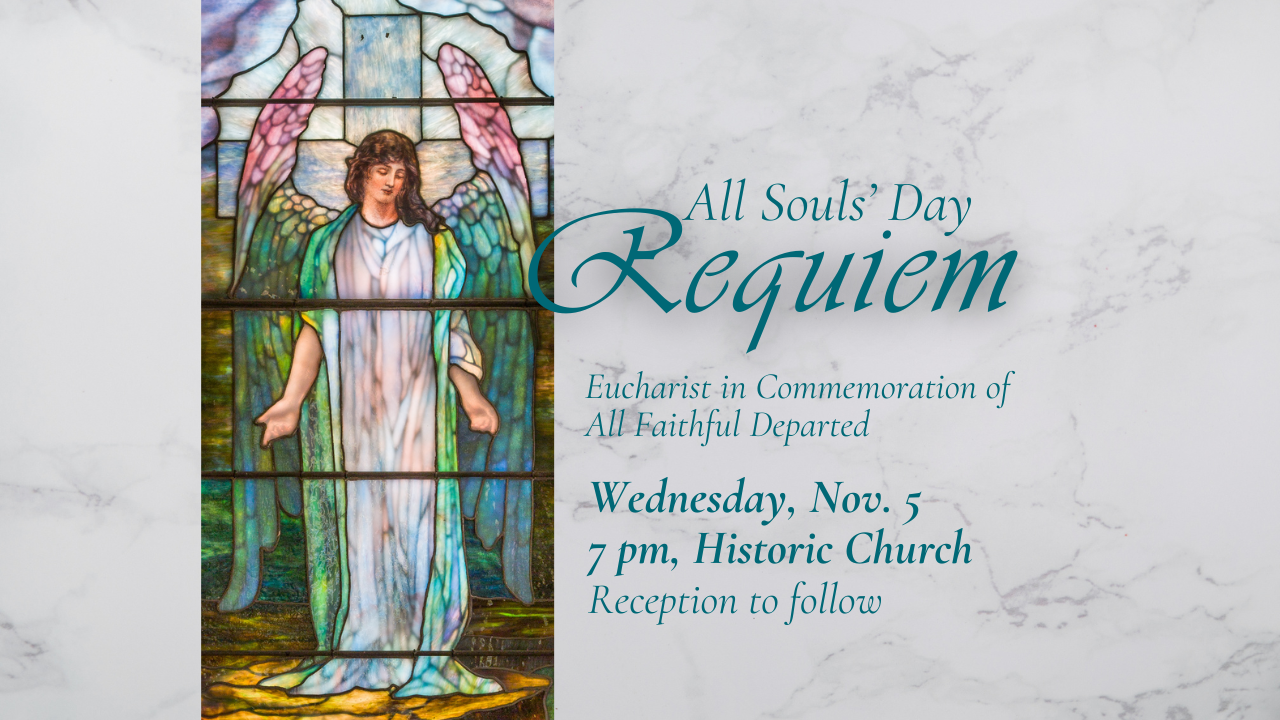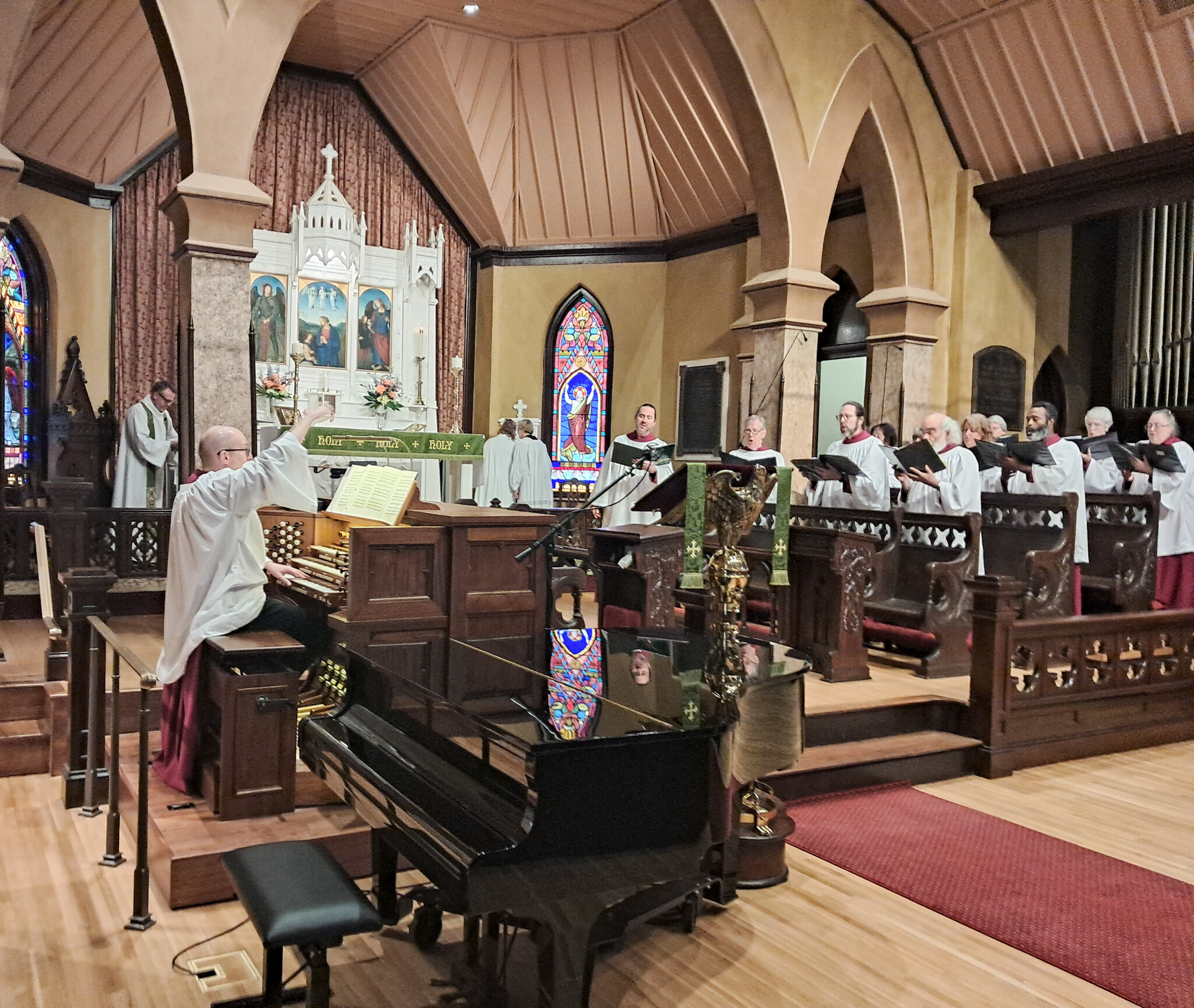
Requiem is a form of the Latin word meaning ‘rest’. It is the first word of the Mass for the Dead in its traditional Roman form and thus has come to stand for that Mass or a musical setting of its main texts. This particular form of the Eucharist is traditionally used on the day of a death, on the day of burial, at various commemorations of a particular death, and at the Commemoration of All Faithful Departed, or All Souls’ Day. The Episcopal Church provides for the celebration of the Eucharist on similar occasions, with some of the same texts as the traditional Roman rite.
The practices of caring for, remembering, and even providing in some way for the ongoing life of, the dead are as old as human history, being perhaps one of the defining characteristics of our species. Though a fully developed doctrine about the afterlife is not part of the Hebrew scriptural witness – and the Bible overall is far from clear about this greatest of mysteries – nevertheless prayers and sacrifice for the dead and a belief in resurrection are attested in the intertestamental period and, interpreted in the light of the Christian experience, were certainly part of the Church’s understanding and practice from the beginning. The celebration of the Eucharist in conjunction with the burial of, and prayer for, the dead, is thus attested from at least the second century, and from the third and fourth, continuing through the Middle Ages, we know of a rich array of rites and ceremonies.
The hardening over time of pious belief and imaginative imagery into rather elaborate and specific ideas concerning the afterlife and what might be done to aid the deceased in their journey led to changes in outlook and practice, and the proliferation and abuse of provisions for the deceased became a major target of sixteenth-century reformers. Nevertheless a reserved and nuanced interpretation of prayer for the dead has remained a part of the Anglican witness, and today explicit prayers for the departed are found among the liturgies of the Episcopal Church: all the more important in a culture now in far greater danger of impiety than of superstition, and in which death and the dead are more remarkable for their absence than their presence in the everyday consciousness.
The Episcopal Church affirms in its Catechism that ‘we pray for [the dead] because we still hold them in our love, and because we trust that in God’s presence those who have chosen to serve him will grow in his love, until they see him as he is’: a practice grounded in the conviction – based on dominical and Pauline teaching and expressed shorthand in various articles of the Apostles’ Creed, viz., Christ’s life, death, descent to the dead, resurrection, and ascension; and the communion of saints, the forgiveness of sins, the resurrection of the body, and the life everlasting – that physical death neither ends our existence nor severs the ties between us, and that Christ’s own path is sign and means of that which the Creator intends for us all.
At the same time, the foregoing doctrines concerning the continuity of life either side of the grave lead us to understand the Kingdom of Heaven, the abundant and eternal life – as well as its opposite – as a present reality as much as an ultimate one, and to see sin and even salvation as corporate as well as individual matters. These understandings can then help us to heed some parts of the Requiem that
might challenge modern ears. For, as the Offertory of the Requiem (originally a prayer for the dying) as well as the daily news reminds us, flames lick at the edges of even the most affluent and stable societies, the Deep nibbles away at our shores and suddenly opens wide its maw, there is much uproar and posturing among the packs and prides, and great suffering – in which we are all in some way implicated – is already present enough for many millions of souls.
Thus in the Requiem we pray not only for the dead, but also for the dying, which includes every one of us; and particularly at All Souls’, as we enter the season of the Church’s year focused on the Second Coming of Christ, we are reminded of the need we all have to repent of our destructive ways and appetites, and instead to live lives that prepare us to meet our Maker: in those around us and in our own hearts, in the Sacraments, at the end of our lives and the end of all things.
It is the Church’s, and thus our, joyful and solemn duty to offer this Requiem Eucharist on behalf of – as a way to care for – all the faithful departed, in thanksgiving for their lives and for the promise that physical death is not the end.
We have assembled this year’s Requiem from settings by Antonio Lotti and Claudio Casciolini. Lotti (1667–1740) was a singer, organist, and finally maestro di cappella at St Mark’s, Venice (one of the most important centers of church music in Europe for some centuries), and a composer of both sacred music and opera. Casciolini (1697–1760) was a church singer and possibly a maestro di cappella in Rome. Though writing in the eighteenth century, both produced settings of the Requiem in more or less the serene style associated with the sixteenth, which grew out of the chant which sustains the Church’s life of public prayer and has inspired composers up to our own day.




Login To Leave Comment